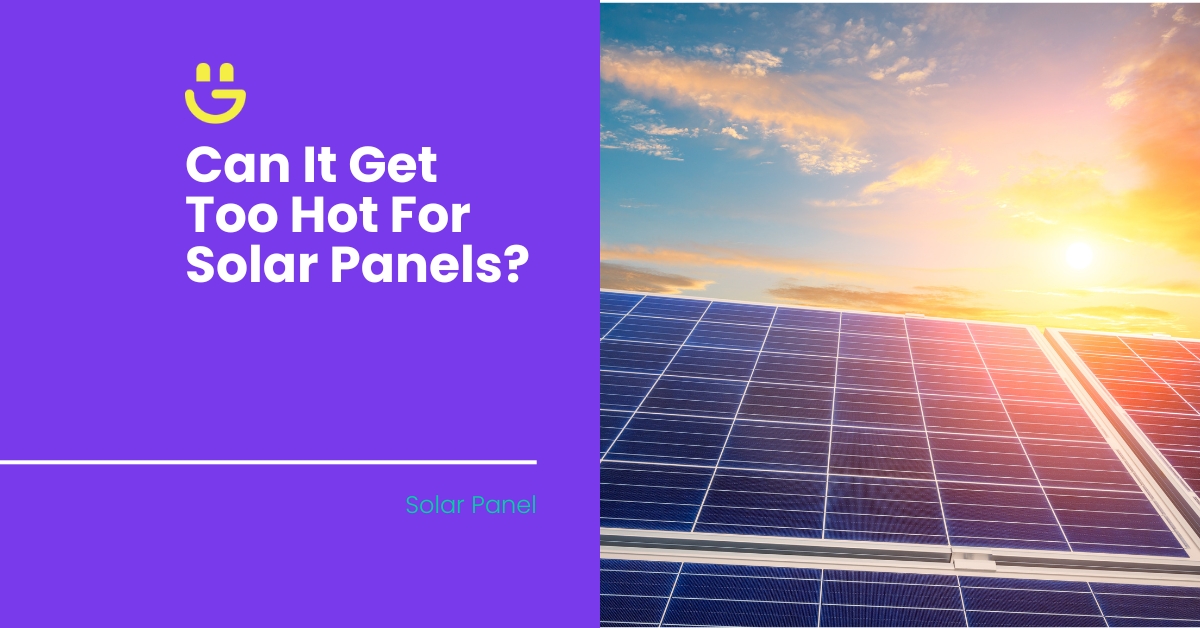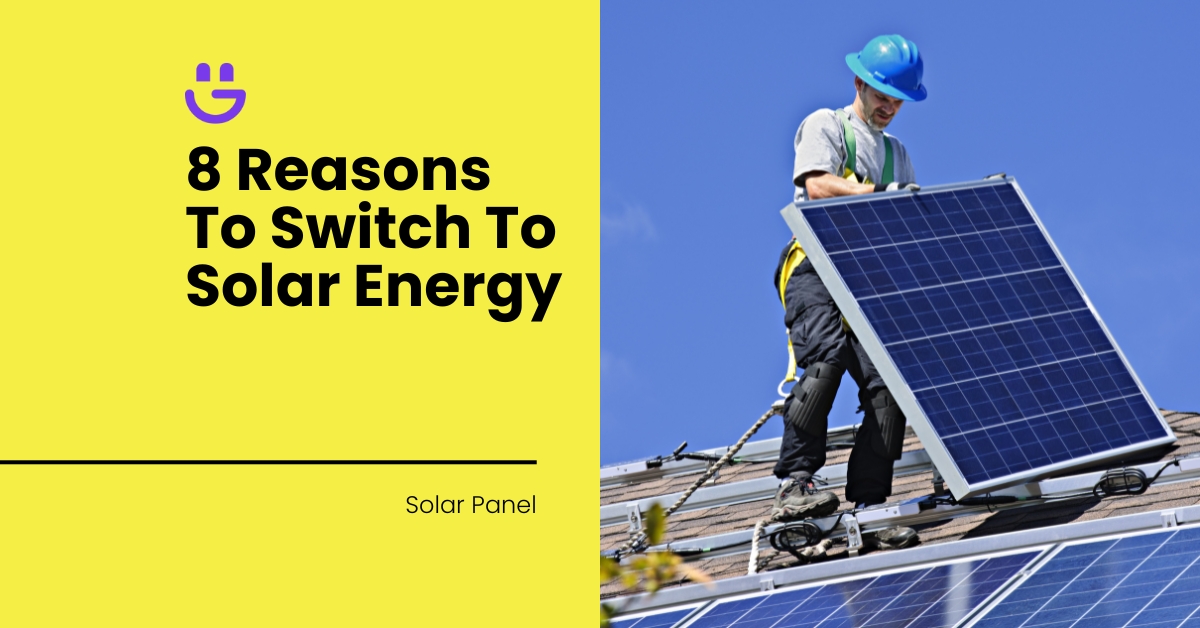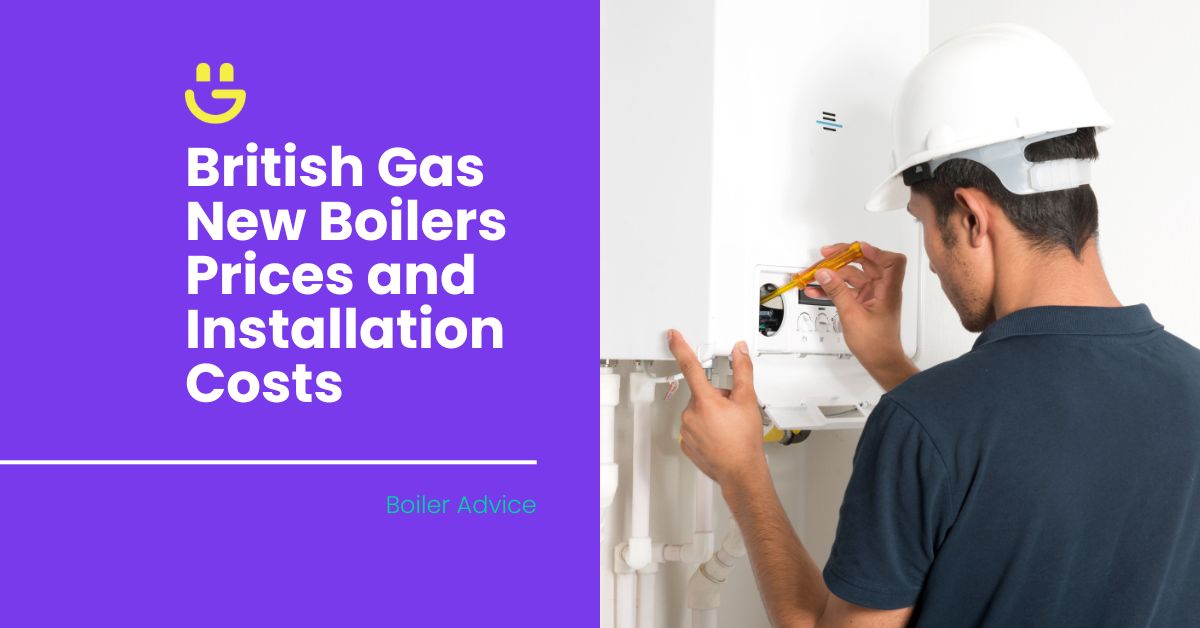Last Updated on November 14, 2025
Yes, high temperatures affect solar panel performance; however, they don’t necessarily stop working when the temperature rises.
Solar panels are built to withstand hot weather, operating in temperatures as high as 85°C with 81% efficiency. In extreme heat, their efficiency level drops by around 0.5% for every 1°C above 25°C.
Whether you’re considering installing solar at your property or currently have a solar PV system, it’s helpful to know how these electricity generators perform when it’s hot.
In this guide, we’ll cover how hot temperatures affect the efficiency of your solar PV system and in what conditions solar power works perfectly.
Contents
Do Solar Panels Work In A Heatwave?
Solar panels work well in heatwaves (provided the sky is clear) as they receive more sunlight and generate more electricity. However, their efficiency rating drops when temperatures rise above 25°C.
Let’s take a closer look at how a 350 W solar system works in various temperatures:
| Temperature/condition | Watts/hour | Maximum efficiency (%) |
|---|---|---|
| 30°C | 344 | 98% |
| 35°C | 339 | 97% |
| 40°C | 333 | 95% |
| Light cloud cover | 266 | 76% |
| Heavy cloud cover | 116 | 33% |
What Is Solar Panel Efficiency?
Understanding how efficient solar panels are involves a good understanding of:
- How they work
- How efficiency is measured
- Temperature coefficient phenomenon
It’s worth mentioning that most solar energy systems are designed to operate in temperatures ranging between -40°C and 85°C but function optimally between 15°C and 35°C (25°C being the “baseline”).
How solar panels work
Solar panels use the sun’s rays to generate electricity via photovoltaic (PV) cells. These cells are generally made from silicon – or other semiconductor materials – that generate an electrical current when exposed to sunlight.
The electricity generated is in the form of alternating current (AC) which passes through an inverter in the solar system and is converted to direct current (DC). DC current is the standard power output needed to power appliances and equipment in our homes and businesses. Check out our in-depth article on how solar panels work.
Surplus electricity can be stored for later use in solar battery units. Solar storage batteries are typically made from lithium-ion or lead acid and are a great investment to reduce your reliance on the national grid. Some households and businesses sell this “extra electricity” back to the grid via schemes like the Smart Export Guarantee (SEG).
Heat vs efficiency
Solar panel efficiency measures how effectively the panels convert sunlight into usable electricity. It is typically shown as a percentage value. A higher percentage indicates the panel is highly efficient and generates more power from the same amount of sunlight.
However, when temperatures rise, the efficiency of solar panels decreases.
This has to do with the semiconductor materials and the laws of thermodynamics. When heated, the silicon atoms in the cells move around too much and cannot generate electricity as easily.
While solar panels need sunlight to generate electricity, they perform best at moderate temperatures of around 25°C. High temperatures negatively impact their performance, resulting in a reduction of generated electricity. This phenomenon is called the temperature coefficient, which we’ll touch on next.
Temperature coefficient
The temperature coefficient represents a percentage decrease in a solar panel’s efficiency for every degree Celsius increase in temperature above the baseline of 25°C. Performance levels drop by 0.5% for every additional degree above 25°C.
For example, on a hot, windless day, you may have a solar panel temperature of around 46°C which means you lose roughly 10% of solar power output.
Here’s a quick glance at the types of PV panels and their temperature coefficient (pMax):
| Types of PV panel | Temperature coefficient (pMax) |
|---|---|
| Monocrystalline and polycrystalline panels | -0.45% to -0.50% |
| Amorphous-based thin-film panels | -0.20% and -0.25%. |
| Hybrid solar cells | Around -0.32% |
What do the experts say?
Experts agree that solar panels can experience slight inefficiency when temperatures rise above 25°C. However, they disagree that extreme heat would cause solar panels to stop working altogether.
In 2023, Solar Energy UK CEO Chris Hewett told EuroNews: “Solar power works perfectly well in the Saudi Arabian desert – and the same panels are being installed on rooftops in Birmingham.”
How Can You Prevent Solar Panels From Overheating?
While solar panels are built to withstand higher temperatures, there are steps you can take to minimise heat buildup to maximise their efficiency. These steps apply to anyone considering renewable energy sources like solar or those who currently have solar panels installed at their home or business.
Optimum placement
- Airflow: Ensure proper spacing between the panels and the roof to allow air to circulate efficiently. This carries heat away from the panels.
- Angle: Solar panels work best at a south-facing 30°- 45° angle. Consider adjusting the tilt angle by 15° to optimise cooling in warmer months.
- Shading: Consider partial shade during the hottest part of the day, especially in warmer regions. Trees or shade structures (e.g. canvas sails) can be strategically placed without impacting overall sunlight exposure.
- Reflective coatings: Reflective materials may help manage the amount of heat absorbed by the panels. Darker surfaces are known to attract/absorb more heat than lighter surfaces.
System maintenance
- Keep them clean: Dust and dirt buildup acts like an insulator, trapping heat. Regularly cleaning your solar panels, especially during dry periods, helps maintain optimal performance.
- Monitoring: Most solar systems have monitoring tools that track panel temperature and power output. Keep an eye on these readings to identify any concerning trends.
FAQs
Can solar panels overheat and catch on fire?
No, solar panels are unlikely to overheat and catch on fire under normal circumstances. However, faulty installation, poor-quality materials and damage to the panels may pose a fire risk.
Will solar panels stop working in hot weather?
A solar panel may stop working if temperatures exceed 85°C. Solar panels are designed to operate in temperatures ranging between -40°C and 85°C, with 25°C being the optimum temperature.
What is the maximum power output for solar systems in the UK?
The maximum power output for solar systems in the UK depends on several factors like positioning, solar system size and the amount of sunlight the panels receive. As an estimate, the average annual power output efficiency for a 4.3 kW system is:
- London = 3,223 kWh
- Exeter = 4,665 kWh
- Norwich = 3,767 kWh
Final Thoughts
The only time temperatures become too hot for solar panels is when they exceed 85°C. Solar panels generate renewable energy from the sun and are a key player in our fight against climate change.
Even with a slight efficiency decrease during hot weather, solar panels are a clean and sustainable source of electricity. We’ve explored how these systems work, how their efficiency rating is measured and methods to prevent overheating.
By embracing solar power, individuals and businesses can contribute to a cleaner future and reduce their reliance on fossil fuels, regardless of temperature fluctuations. Contact Eco Happy, the UK’s leading heating and solar experts, if you’d like more information about solar power or solar installations.






Tom Allen
Solar Expert